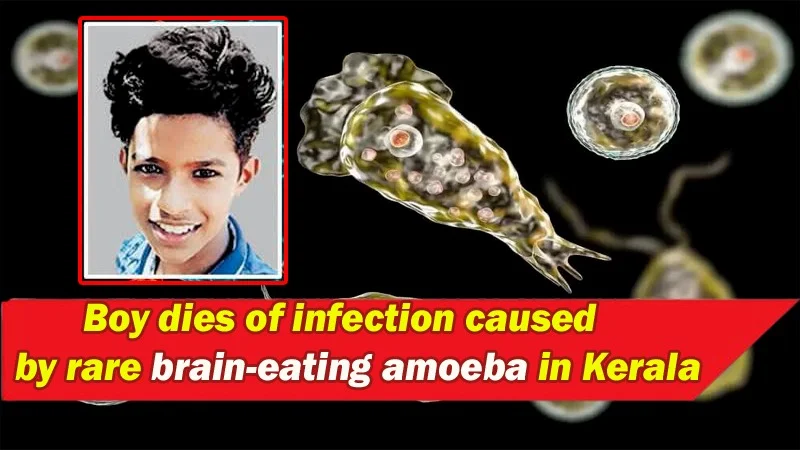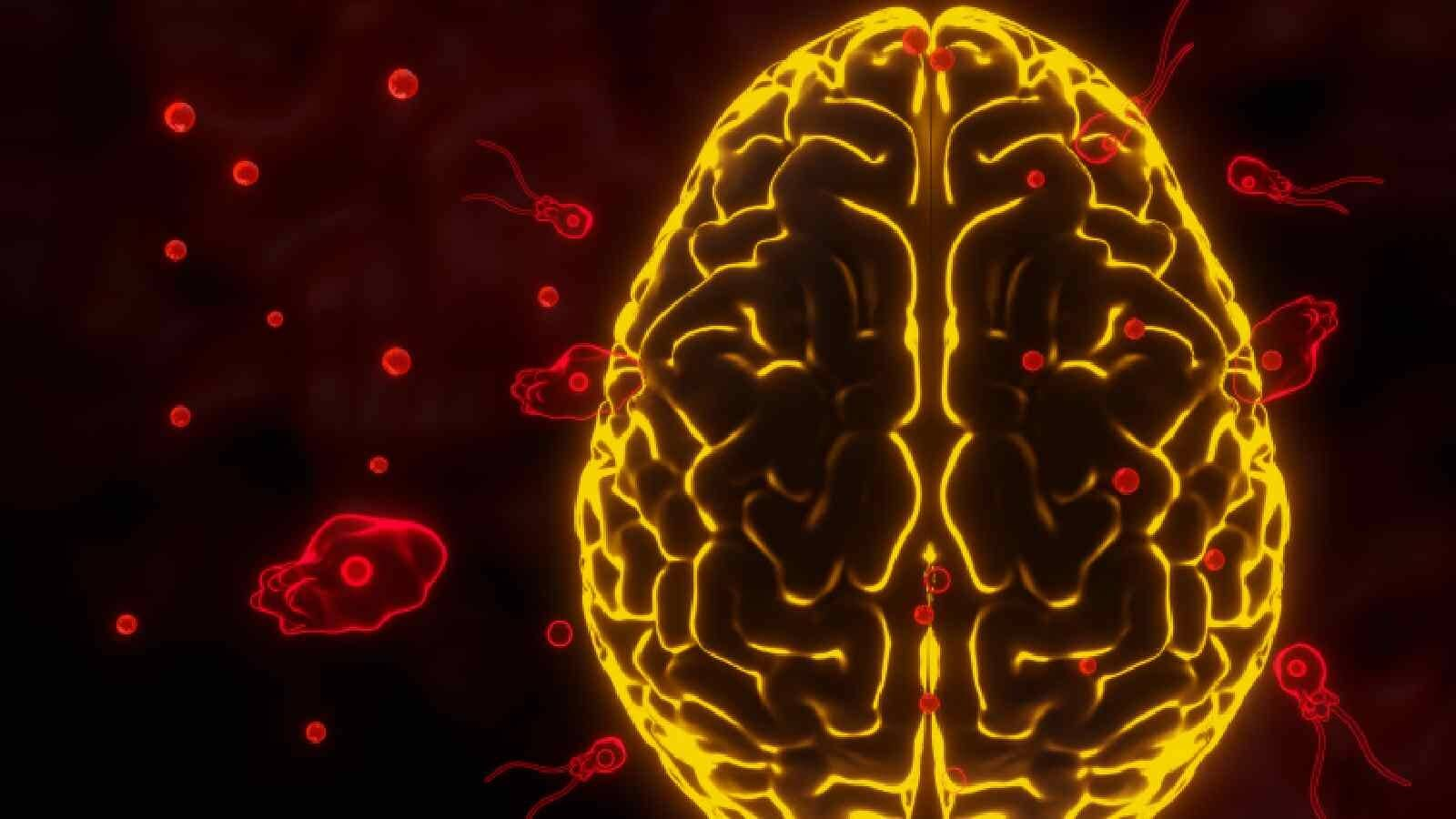| Posted on | news-current-topics
Brain-Eating Amoeba | Common Areas, Treatment, Recent Cases
| Posted on
Kerala's Battle with Brain-Eating Amoeba: Common Areas, Treatment, and Recent Cases
Introduction
Kerala has been thrust into the spotlight due to a series of alarming cases involving the deadly Naegleria fowleri, commonly known as the "brain-eating amoeba." This organism causes primary amoebic meningoencephalitis (PAM), a severe and often fatal brain infection. This article provides an overview of the recent cases, the common areas where this amoeba is found, treatment options, and preventive measures to combat this health threat.

Recent Cases in Kerala
In recent months, Kerala has reported several tragic cases of PAM. A 12-year-old boy from Kozhikode was diagnosed with the infection after swimming in a contaminated pond. Despite prompt medical attention, his condition remains critical due to the disease's high mortality rate of 95-100%. Earlier, a 15-year-old boy from Alappuzha and a 13-year-old girl from Kannur succumbed to the same infection, highlighting the urgent need for public awareness and preventive measures.
These cases have sparked significant concern across the state, particularly because the infection is rare but extremely deadly. Health officials have closed down several ponds and issued warnings to the public about the dangers of swimming in untreated freshwater bodies.
Common Areas of Infection
Naegleria fowleri thrives in warm freshwater environments such as lakes, rivers, hot springs, and poorly maintained swimming pools. It is thermophilic, meaning it grows best at higher temperatures, typically above 25°C (77°F). In Kerala, the amoeba is commonly found in stagnant water bodies, which are prevalent during the hot and humid monsoon season. The amoeba enters the human body through the nose, typically when individuals swim or dive in contaminated water.

Symptoms and Diagnosis
The onset of PAM symptoms occurs rapidly, typically within five days of exposure. Early symptoms include severe headaches, fever, nausea, vomiting, and neck stiffness. As the infection progresses, patients may experience altered mental states, seizures, and hallucinations. The disease rapidly advances, often leading to death within one to 18 days after symptoms appear.
Diagnosing PAM is challenging due to its rarity and the rapid progression of symptoms. Diagnosis typically involves analyzing cerebrospinal fluid (CSF) samples to detect the presence of the amoeba. However, this method requires a high index of suspicion from healthcare providers, as the initial symptoms are similar to bacterial meningitis.
Treatment Options
There is currently no definitive cure for PAM. Treatment involves a combination of antimicrobial and antifungal drugs, including amphotericin B, azithromycin, fluconazole, rifampin, miltefosine, and dexamethasone. These drugs aim to control the infection, but their effectiveness is limited, and survival rates remain extremely low. Early diagnosis and immediate initiation of treatment are critical for any chance of survival.
Preventive Measures
Preventing Naegleria fowleri infections involves several key strategies:
1.Avoid Swimming in Stagnant Water: Public health officials advise avoiding swimming in warm, stagnant freshwater bodies, especially during hot weather when the amoeba is most active.
2.Proper Pool Maintenance: Swimming pools should be adequately chlorinated and maintained to prevent the growth of the amoeba.
3.Use of Nose Clips: When swimming in freshwater bodies, using nose clips can prevent water from entering the nasal cavity, reducing the risk of infection.
4.Public Awareness: Educating the public about the risks and symptoms of PAM can help in early detection and prompt medical intervention.
Conclusion
The recent cases of brain-eating amoeba in Kerala underscore the importance of public awareness and preventive measures. While Naegleria fowleri infections are rare, their high fatality rate makes them a significant public health concern.
By avoiding exposure to contaminated water and maintaining proper hygiene and safety practices, the risk of infection can be minimized. The medical community continues to search for more effective treatments, but early detection and intervention remain the best defense against this deadly amoeba.
0
0 Comment
| Posted on
Primary amoebic meningoencephalitis (PAM), an uncommon however critical mind illness, is a result of the unmarried-celled brain-consuming amoeba, technically referred to as Naegleria fowleri. This bacterium can be extraordinarily dangerous to human fitness and is observed in heat freshwater habitats.

Common Areas for Brain-Eating Amoeba
Typically, warm freshwater environments like rivers, lakes, hot springs, and unkempt swimming pools are domestic to Naegleria fowleri. The temperature range in which the amoeba thrives is 25°C to 40°C (77°F to 104°F), and it is most not unusual in the following regions:
United States: Southern states along with Florida, Texas, and Louisiana have recorded the bulk of instances in the US. The amoeba has the correct environment thanks to the warm climate and an abundance of freshwater bodies.
Australia: Similar to America, incidences of mind-consuming amoeba infections have been documented in Australia's warm, tropical areas, especially in Queensland and New South Wales.
India: According to current reports, Naegleria fowleri has been determined across the United States of America, with a case in Kerala receiving much interest.
How Infections Occur?
When tainted water is received into the nose, normally from swimming or diving, infections happen. After ascending the olfactory nerve to the mind, the amoeba starts off evolved to harm mind tissue there. It is essential to understand that ingesting tainted water does now not result in infection.
Brain-consuming amoeba (Naegleria fowleri) infections appear when tainted water gets into the frame through the nostril, typically from swimming or diving in warm waters. The amoeba enters the brain through the olfactory nerve and works its manner up the nasal passages. It's critical to remember that consuming tainted water does not routinely bring about contamination; it ought to enter through the nose.
Symptoms of Brain-Eating Amoeba
Early signs of a Naegleria fowleri contamination would possibly encompass the following and are frequently harassed with bacterial meningitis symptoms:
- Intense headache
- Fever
- Vomiting and nausea
- Rigid neck
The signs and symptoms get worse as the contamination spreads and might consist of:
- Perplexity
- Imbalance loss
- Convulsions
- Delusions
- Coma
The illness advances speedily; usually, someone dies from it one to 2 weeks after signs and symptoms appear.

Is Brain-Eating Amoeba Treatable?
The illness has a substantial mortality fee and the mind-consuming amoeba may be very difficult to therapy. On the other hand, the probability of survival might be elevated with in-depth remedy and early detection. The important interventions incorporate:
Antifungal Drugs: The most commonly used antifungal drug for PAM remedy is amphotericin B. It is injected intravenously and, in certain conditions, directly into the CSF.
Antibiotics and Antiprotozoal medications: Rifampin and miltefosine are examples of antiprotozoal medicinal drugs that have been used alongside antibiotics to a few diplomas of effectiveness.
In an intensive care unit, supportive care involves symptom control, hydration protection, and important sign monitoring.
The negative survival charge persists regardless of these efforts, underscoring the importance of preventative moves.
Preventive Measures
Prevention is important on account that Naegleria fowleri infections have a high loss of life fee. Suggested actions include:
- Steer clear of freshwater activities: Avoid diving or swimming in heat freshwater areas, specifically in the summertime.
- Using Nose Clips: To preserve water out of your nose while you're doing freshwater sports, use nose clips.
- Steer clear of worrying sediments: Since amoeba is more likely to be discovered in shallow, warm freshwater environments, steer clear of traumatic sediments there.
Causes and Spread of Brain-Eating Amoeba in Kerala
There are several motives because Naegleria fowleri is found in Kerala.
- Surroundings: The heat temperatures required for amoeba survival are provided using Kerala's tropical surroundings.
- Water Sources: The amoeba might also find a home inside the state's many freshwater bodies, which consist of lakes, rivers, and backwaters.
- Water control: Poor protection of water assets can raise the risk of pollutants, especially in the summertime.
Kerala Amoeba Brain-Eating Case
A few times of Naegleria fowleri infections have been documented in India in recent years, with Kerala reporting one particularly noteworthy case. In one instance, a small baby had a fever, disorientation, and a strong headache. The youngster obtained energetic therapy with antifungal and antiprotozoal drugs, but his fitness quickly worsened and he passed away. The unlucky episode has delivered interest in the need for preventive measures and the existence of mind-consuming amoeba within the place.
Naegleria fowleri, the mind-ingesting amoeba, remains an unusual however lethal risk, particularly in warm freshwater habitats. Important levels in controlling and fending off infections encompass being privy to regular places in which the amoeba is a gift, comprehending the signs, and being aware of the numerous remedies. Cases from the current past, including the ones from Kerala, emphasize the need for warning and preventative steps to protect public health.
Although treating Naegleria fowleri infections may be tough, the chance may be reduced with early intervention and strict attention to protection precautions. To tackle this dangerous microorganism, public health activities aimed toward teaching humans and improving water protection are crucial.
0
0 Comment
